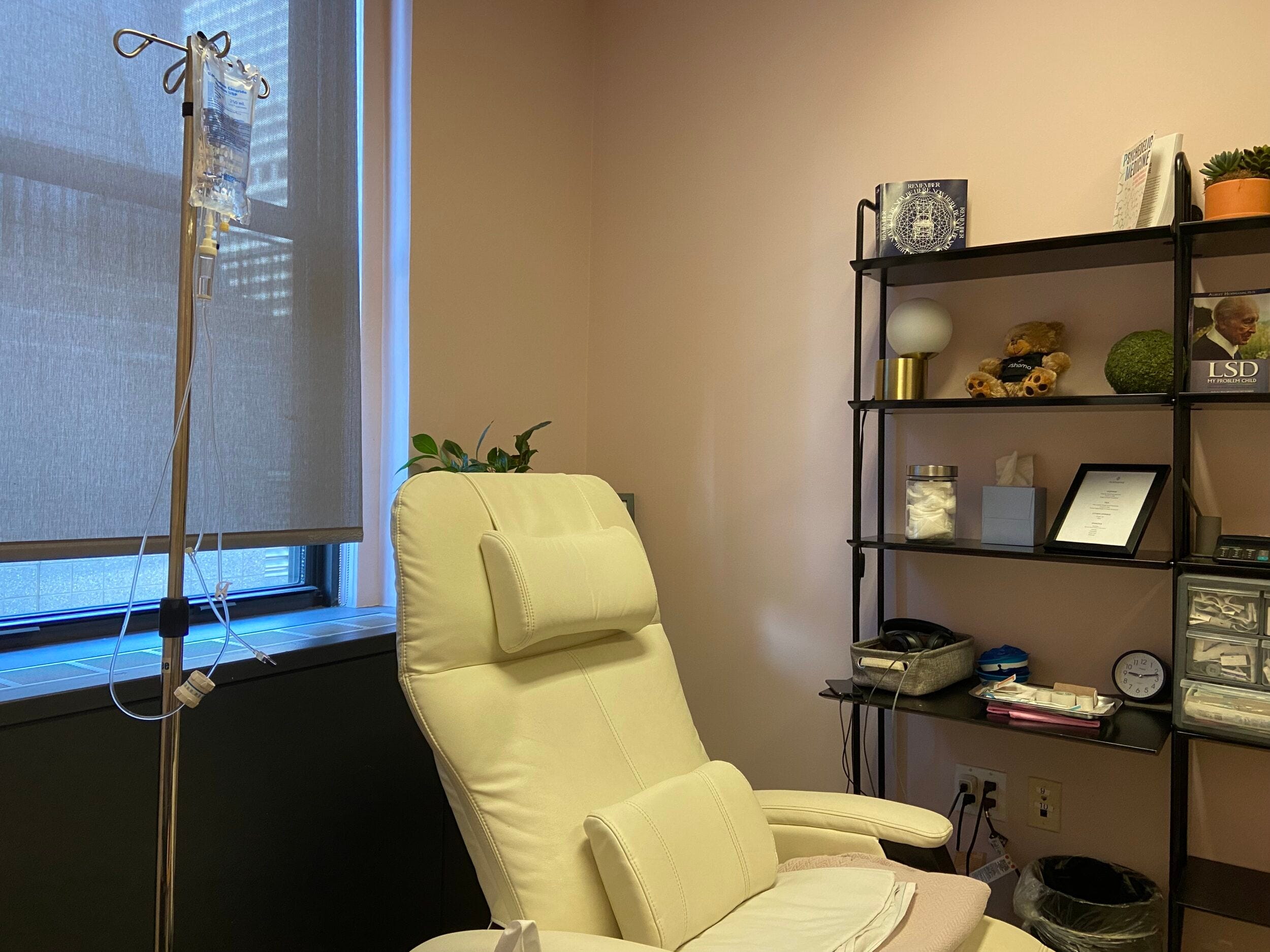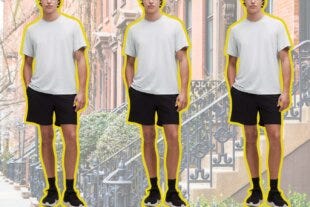It’s a Monday morning, and while I am technically lying down on a gravity chair in a small room on the twenty-first floor of a very tall building in New York City, I am also, well, in the matrix. And I don’t see how I’ll ever get out.
Let me back up.
I have been in therapy most of my adult life. I love it. Getting to talk about myself without worrying I’m taking up too much time at brunch with friends or on the phone with my sister on my problems? Heaven. A friend might get exasperated the hundredth time I bring up the same issue, but a therapist can’t.
Well, a couple therapists of mine have. But they get paid, so they have to listen.
Therapy has brought me insight about who I am, how I got here, and what to do next.
But recently I found myself sans therapist, and looking for new avenues of personal development. In New York, I have (male) friends who microdose at work, and casual (male) business acquaintances who’ve happily shared details of their latest ayahuasca trip on LinkedIn. Confirming the “Men will do anything but go to therapy” meme is alive and well.
Which is how ketamine therapy made its way into my peripheral vision.
Discovered in 1962, ketamine is a compound found to be a safe and short-acting dissociative anesthetic and pain reliever. It’s FDA-approved for many uses, including among children in emergency and operating rooms.
For psychedelic journeys or mood disorder treatments, sub-anesthetic doses (a fraction of what would be given to a pediatric patient during a surgical procedure) are administered, allowing the patient to experience different planes of consciousness. Often, it provides for “ego dissolution,” viewed by many mental health practitioners as a doorway to healing.
I was curious, so I did what any responsible adult looking for a legal way to take drugs does in the Year of Our Lord 2024 — I turned to Google. And Google pointed me to Nushama, a well-reviewed “psychedelic wellness center” in midtown Manhattan, a few blocks from the LEGO store.
After a virtual assessment with chief medical officer Dr. Steven Radowitz to ensure I was a good candidate for ketamine therapy, I scheduled an appointment. 9am on a Monday morning. I was told to limit my meat intake the day before, and skip caffeine that morning “if possible.”
After a cup of tea at home, (It’s green tea!, I told myself, It barely counts!), I arrived on time, a little jittery from nerves (NOT the tea) but otherwise ready for my journey. The center’s suggested protocol is six treatments over a 3-6 week period — I would be getting a taste of what to expect from ketamine-assisted therapy but was warned that long-lasting changes would only come with more sessions.
Stepping off the elevator, I was greeted by a standard medical office, if that medical office was decorated by the team at Rainforest Cafe. Psychedelic-looking faux-greenery hung from the walls behind a serene receptionist who checked me in and showed me to my room.

From there, a friendly medical technician entered and hooked me up to an IV bag. Then, Dr. Radowitz came in and reviewed the dosage of my ketamine infusion, an amount determined by your weight and basically how woo-woo you want to go. After that, a nurse came in and added the ketamine solution to the IV bag while an integration coach with the soothing cadence of a yoga teacher walked me through my “intention-setting worksheet” I’d submitted the night before (your girl loves homework).
About 45 minutes after I’d arrived, the coach helped me pull on a soft eye mask and covered my ears with headphones set to an ambient music playlist meant to help facilitate the journey, and left the room.
The next few minutes, I adjusted to the darkness and listened to the new age-y tunes and feeling…normal? Maybe ketamine doesn’t work on me, I thought?
Five seconds later, I turned some corner in my own mind and the world dissolved.
The building no longer existed. New York City was gone. All I could picture were my dog, my husband, and the Starbucks in Astor Place where I often start my workdays. Everything else, I could no longer call up in my mind’s eye. I didn’t know how to pronounce my own name.
For a moment, I felt afraid, and then, like an ambivalent roller coaster passenger, I decided to throw my hands up (metaphorically speaking, of course..I couldn’t have moved any part of my body for a million dollars) and give myself over to the ride.
While I’ve only seen the third Matrix film (a pandemic movie night compromise), I was pretty sure that’s where I’d wound up. Winding through what looked like a machine-filled server room the size of the Death Star, and I just kept going deeper.
In this time, no spirits came to visit me, and the key to the universe wasn’t revealed to me — or if it was, it didn’t stick. But after (what turned out to be) about 40 minutes, I started to slowly feel my hands again, and the world as I’d left it slowly re-formed in my imagination. When the integration coach came back in at the hour-mark, I was woozily sitting back up and staring in disbelief at the room that was, in fact, just as I’d left it.
The goal of psychedelic medicine is to help us recalibrate to our true, inner selves and essence. After one journey, I didn’t go home and throw out my Lexapro, or abruptly go vegan (though I know someone who knows someone who did just that after smoking toad in the Hamptons…but that’s another story).
But if the world can so easily disassemble in my own mind? Then surely there are limiting beliefs I’ve held as firmly as the city blocks that awaited me when I left that could fall away, too.
What to know about ketamine therapy
Before you go
You’ll be asked about your physical and mental health in a medical intake. Share more, not less.
If you’re approved for ketamine-assisted therapy, intention-setting ahead of your journey can be as important as the journey itself. What do you want to get out of the experience? To reveal where you’re blocked? Let go of the attachments and traumas you’re hanging onto? To release the limiting beliefs that are holding you back? Consider your goals.
Is ketamine safe?
Ketamine is generally considered safe when administered in a clinical environment by medical professionals but is not without potential risk. Ketamine is contraindicated for individuals with diagnosed or suspected psychiatrically unstable conditions, including psychosis and mania.
Increases in blood pressure and heart rate can occur but rarely require any medical intervention at sub-anesthetic doses.
What ketamine-assisted therapy costs
Ketamine is not currently covered by insurance. At Nushama, a full protocol includes six treatments, at a cost of $800 per treatment. They also offer a “Hero’s Journey” package for fire department workers, police officers, EMT professionals, nurses, veterans, and teachers, plus spouses of veterans for a reduced rate.
More personal development stories from SG
How to Be the Most Popular Guy at a Party
Is It Time to Go to Therapy?
The Newest Therapy Dupe: Men’s Group
Your Morning Routine is Missing This Key Practice






